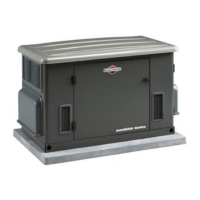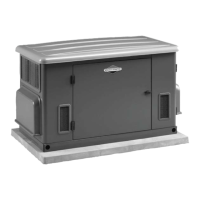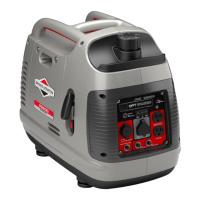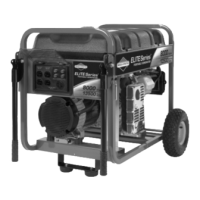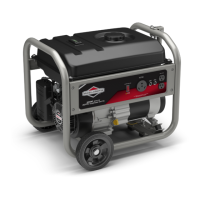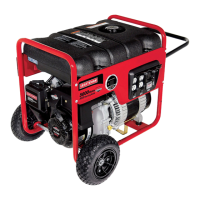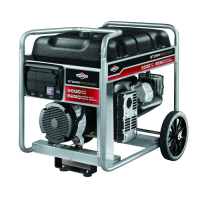C_ byEe_'sCu__et
Bri_s & Stratton Power Products Home Generator System
Owners Manual
NOTE: In some areasyou may needto acquire electrical
permits for installingthe Home Generator System,building
permits for installinggaslines,and permits for noise
allowances.Your installershould check your local codes
AND obtain the permits before installingthe system.
Fuel Factors
An importantconsiderationaffecting the entire installation
isthe type of fuel usedby your Home Generator System.
The system was factory tested and adjusted using natural
gasas a fuel. Liquid propane (LP) may atso be usedas a fuel
(seethe Installation Manual).
Although there are specific factors that are inherent to each
of these fuels,your location and the duration of possible
utility interruptionsshouldguide your selection of fuel type.
For urban installations,Natural Gas(if available)should be
your fuel of choice.For remote installations,a Liquefied
Petroleum (LP)tank might better meet your needs.
For proper engine function, the following fuel guidelines are
recommended:
• Use clean,dry fuel, free of moisture or any particulate
material. Using fuels outside the following recommended
values maycause performance problems.
In enginesset up to run on propane (LP) gas,
commercial grade HD5 propane with a minimum fuel
energy of 2500 BTUs/ft_with maximum propylene
content of 5% and butane and heaviergascontent of
2.5%and minimum propane content of 90%.
WARNING
The Home Standby Generator is equipped with an automatic
safety gas"fuel shut-off" valve.
DO NOT operate the equipment if the"fuel shut-off" valveis
missing or inoperative.
Power Decrease at High Altitude or High
Temperature
Air density is lessat high altitudes, resulting in less available
engine power. Specifically,engine power will decrease 3.5%
for each l,O00feet (300 meters) above sealeveland I% for
each 10° F (5.6°C) above 77°F (25°C). Make sure you and
your installerconsider these factors when determining
total generator load.
Generator Location
The actual physical locationof your backup generator hasa
direct affect on:
I. The amount of plumbing required to fuel your
generator.
2. The amount of wiring required to control and connect
your generator.
NOTE: Specific locationguidelines are discussedin the
Installation Manual.Acquaint yourself with that information
and confer with your installer.Be sure to ask how your site
might affect installationcosts and compliance with local
codes and standards.
Generator Clearances
The generator enclosure must be a minimum of 3 ft.
(92 cm) from combustible material (NFPA 37).Leaveat
least 3 ft. (92 cm) all around the enclosure for accessto the
insideof the enclosure (NEC Art. I I0-26a,Art. I I0-26b).
The unit's exhaust port must be at least 5 ft. (I 52 cm) from
any building opening (window, door, vent etc.), and the
exhaust must not be able to accumulate in anyoccupied
area (Figure I).
Exhaust port must be
5 ft (152 cm) minimum
distance from building
openings
/
6
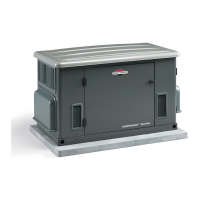
